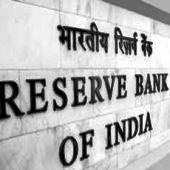 | « Back to article | Print this article |
 D Subbarao might have stayed away from increasing policy rates during the first half of his three-year term as the Reserve Bank of India governor, but economists expect him to make up for it in 2010.
D Subbarao might have stayed away from increasing policy rates during the first half of his three-year term as the Reserve Bank of India governor, but economists expect him to make up for it in 2010.
A dozen economists polled by Business Standard on Monday were unanimous that the move -- an increase of 25 basis points in repo and reverse repo rates -- could come as soon as April 20, when the central bank presents its annual policy for 2010-11.
Repo rate is the one at which the central bank lends funds to banks; reverse repo is the rate at which banks earn interest on funds parked with RBI.
Some of the economists also said Subbarao could increase the cash reserve ratio to suck out liquidity from the system.
Indranil Sengupta, India economist at Bank of America-Merrill Lynch said he expected a hike of 25 basis points in CRR in the April policy.
In January, the central bank had announced a 75-basis point increase in cash reserve ratio to suck out Rs 36,000 crore (Rs 360 billion) from the financial system.
But, not all agree. "After accounting for a front-loaded calendar, we expect liquidity to be just about comfortable and not excessive. Hence, we do not look for a CRR hike in the April policy," said Deepali Bhargava, India Economist at ING Vysya Bank.
Banks today parked Rs 35,315 crore (Rs 353.15 billion) with RBI through the reverse repo window, while the government's balances were estimated at Rs 101 crore (Rs 1.01 billion) as of March 12.
Government balances would have increased at the end of last week, due to collection of advance taxes. RBI looks at the reverse repo window and government's cash balance to assess the overall liquidity in the system.
By the end of 2010, economists said, policy rates could be at least 100 basis points higher, as RBI tackled inflation -- they forecast this would cross 10 per cent in March.
In fact, some economists felt RBI would raise rates in the April policy even if inflation numbers were lower than anticipated.
"We haven't yet reached a stage of monetary tightening because interest rates are still far below normal. RBI will have to continue the process of normalisation of policy rates, since the economy is growing as per expectations and inflation is on the up-tick as well," said Sonal Verma, Nomura's India economist.
In a note, Citigroup economists Rohini Malkani and Anushka Shah said RBI saw heightened 'risks of supply-side pressures translating into a generalised inflationary process'.
Besides, the central bank had itself said: "In the emergent scenario, low policy rates can complicate the inflation outlook and impair inflationary expectations."
On Friday evening, RBI caught the markets by surprise when it announced a raise in policy rates a month before the next policy statement. Statements made by RBI after the January policy review had indicated mid-policy action was unlikely.
RBI joined central banks in Australia and Malaysia in raising policy rates this month, while Norway and Israel did so at the end of last year. Repo and reverse repo rates were increased by 25 basis points each, to five per cent and 3.5 per cent, respectively.
"We have to see last week's hike in the backdrop of signs of overheating (like real estate prices), which RBI wants to deal with. It may increase the reverse repo rate by 50 basis points, signalling its intent to tackle inflation. It may increase policy rates up to 150 basis points till December.
"This it would do in a gradual manner, to avoid knee-jerk reaction from the market," Bank of Baroda's chief economist Rupa Nitsure-Rege said.
D K Joshi, principal economist at rating agency Crisil, said RBI's policy action would depend on the headline inflation number, credit growth data, commodity prices and the strength of recovery, measured by private consumption and investment.
Like inflation, which a poll of the economists estimated would be between 10 per cent and 11 per cent in March, there was also near-unanimity on industrial output expanding by 15-16 per cent till May.
This was expected to provide further thrust to RBI action, as growth would appear to be on a firmer wicket.
"We will continue to see high growth (in index of industrial production) for another two-three months, may be till May or June. That's when the crisis base effect is replaced by stimulus effect," said BofA-Merrill Lynch's Sengupta.
The other number the central bank would factor in before deciding its course of action in April was the growth in bank credit during the current financial year. Economists said this would be in the 15.5-16.5 per cent region.
A majority of the economists, however, said RBI's revised estimate of 16 per cent growth in non-food credit would be breached, as the flow of bank loans was estimated at 15.07 per cent in the year up to February 12.
Besides, the flow of resources from other sources such as equity offerings and bond issues had been robust and more than made up for the shortfall in bank loans.
While bankers are watching RBI's policy moves on April 20 before deciding their course of action, most are likely to first opt for a deposit rate hike.